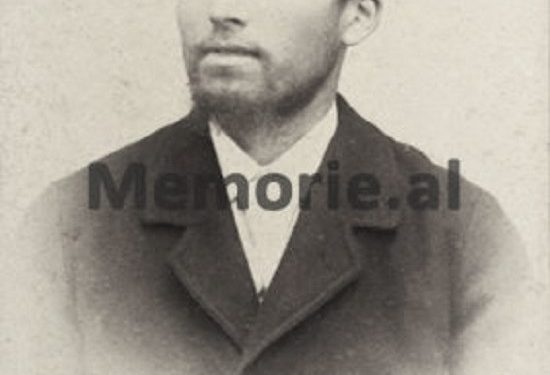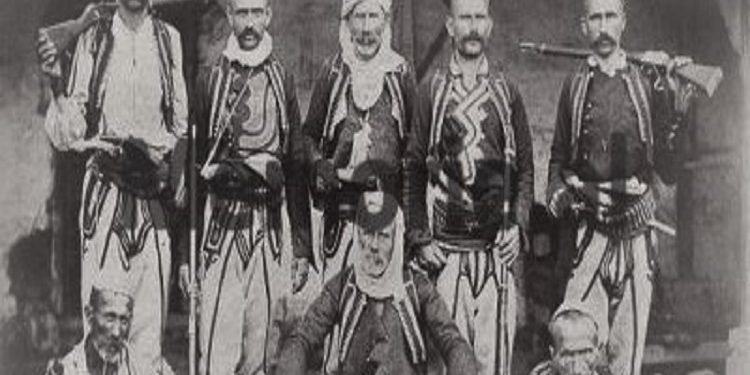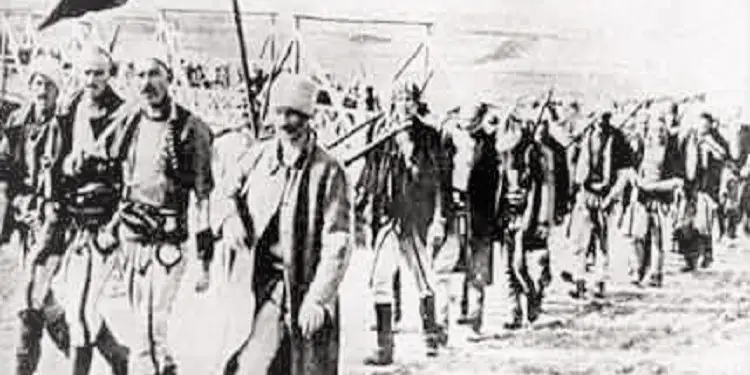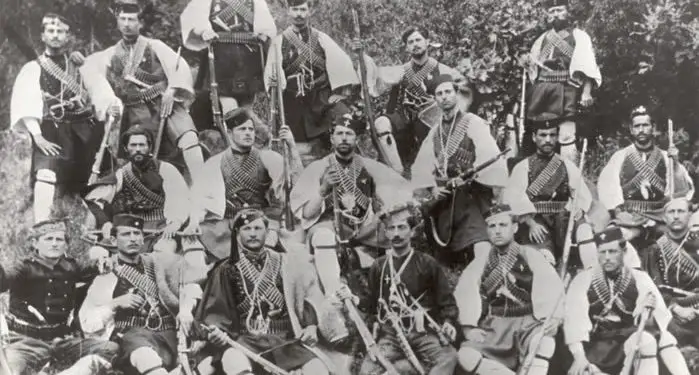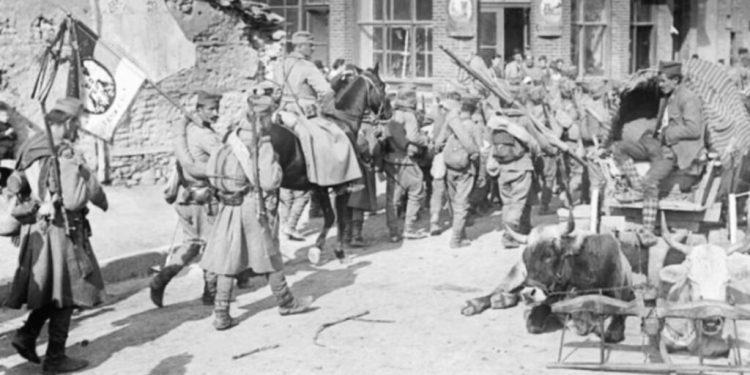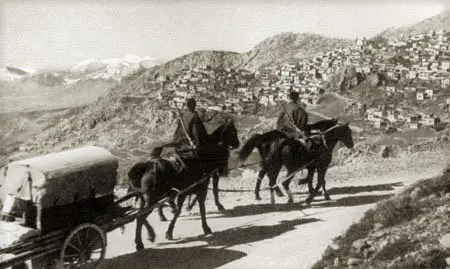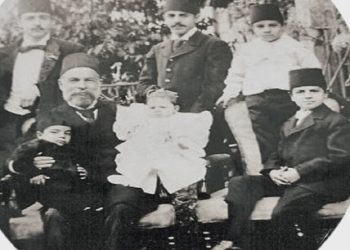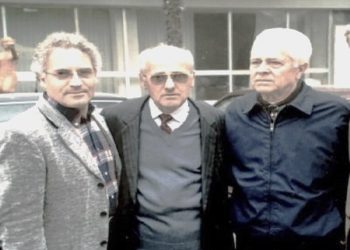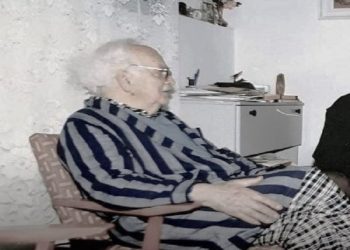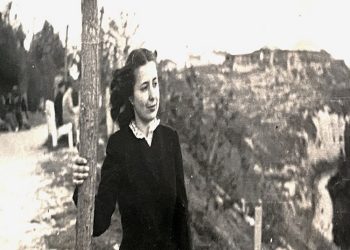By Antonio BALDACCI
– How Albania Shrunk from 92,000 sq km to 28,000 sq km?! –
Memorie.al / At the beginning of the voluminous book ‘Albanian Itineraries’, it is stated that its author, Professor Antonio Baldacci, is one of the authors who have made a great contribution to understanding Albania, “this country still full of mystery and poetry.” This tireless defender of the rights of the Albanian people has studied Albania in all aspects, as a distinguished naturalist and ethnographer.
“The London Conference, which mutilated what should have been an independent Albania, gave the new state an area of about 28,000 sq km, with 800,000 inhabitants. This was not the Greater Albania that the patriots wanted. They would have wanted the four former Turkish vilayets of Shkodra (10,800 sq km), Ioannina (17,000 sq km), Kosovo (32,900 sq km), and Monastir (28,500 sq km), to which they would have added a part of the vilayet of Thessaloniki (about 3,000 sq km), for a total of 92,200 sq km, with a population of more than two and a half million inhabitants.
But this demand of theirs was an excessive aspiration, because, while it is true that the state defined by the London Conference did not encompass the entire great family of Albanians, it is also true that within these claimed borders, the intensity of Albanian groups decreases the further they move from the central core of the new State, to such an extent that they were outnumbered within the Greek and Slavic populations, which formed the majority.
The creation of a medium-sized Albanian state, as projected by Europe, and inhabited almost exclusively by Albanians, fostered the hope that it would avert insistent religious and political demands in favor of one propaganda or another, and by highlighting a civil feeling, the well-being of the common homeland would be ensured. The three dominant faiths in Albania, Muslims, Orthodox, and Catholics, to which the Bektashi faith can also be added (the administrative districts of Kruja, Berat, Tepelenë, Gjirokastra) must be convinced of the absolute necessity to walk a path that the highest interest of the homeland requires.
The characteristic temper of the Albanian people (he says they have their heart in their throat), their finesse and ambition, the fruit of that freedom that opens the way to the lack of any restraint and submission inherited for centuries, must be corrected to serve this greater principle, with calmness and clear thinking, because only this can lead to the great activity of the state. It would be desirable that the majority of the Vlachs also enter as part of Albania, and especially that compact mass of the Pindus, which was given to Greece and which consequently will go towards extinction.
The Vlach population, which has always lived in excellent relations with the Albanian population, desires union with Albania, where with their greater civilization and distinguished activity in the field of animal husbandry, agriculture, crafts, and commerce, they could be of unlimited benefit. The Vlachs have a developed spirit of initiative from their ancient Roman ancestors, and if they were not forced to live outside their aspirations, they would represent one of the most positive bases of the Balkan order.
The medieval Bulgarian-Romanian kingdom is very interesting in this regard. We Italians would be pleased if the Vlach aspirations were fulfilled, because the policy of our government, especially in the last twenty years, has always aligned with that of Romania in the defense of Balkan Romanism. Sultan Abdul Hamid gave the Vlachs, thanks also to our initiative, the greatest concessions. The Aromanian-Macedonian patriots still remember with deep gratitude the imperial edict of 1905, which the venerable Fortis managed to secure from the old sultan…!”
The Composition of the Albanian Population
“The largest and most interesting group of Balkan Aromanians is the one known by the name of the Frashëriot tribe, who live in the regions of Korça, Berat, and Përmet in Epirus, an area that the Greeks want to separate from Albania. These Frashëriots, who are also scattered in Macedonia and Thessaly, have preserved untouched, during the ups and downs of the centuries, the Latin character of their idiom, customs, and clothing…!
Meanwhile, the Vlachs of the Pindus were definitively ceded to Greece and not to Albania, as they themselves demanded. Greece was not satisfied with the Pindus, but attacked with its propaganda that part of Epirus that had been recognized to Albania, with Gjirokastra and with the remaining part of the old vilayet of Ioannina, as well as with the western part of Monastir, which Serbia had not taken. Gjirokastra was the most vital city of southern Albania, which included the extreme security zone facing Greece.
This city should have constituted a very important center of attraction for the scattered Albanian population throughout the Greek territory. Regarding the region of Gjirokastra, let us remember that the Greek newspapers carried out a campaign to support, against the truth, the claim that the majority of the population of this region was Greek.
But, in 1896, the Italian Consul General in Ioannina, Commander Millelire, wrote to the ambassador in Constantinople that the beys and other Albanian chiefs, through an Italo-Albanian named Fanti, originally from the Gjirokastra region, had declared that all of them, without distinction, Muslims and Christians, would never unite with Greece and that, otherwise, they would burn the country and kill their children. I, who am writing, know the truth of this document, because traveling often through Epirus with Commander Millelire, I heard every day the aspirations and feelings of the Albanians of the vilayet of Ioannina at that time.”
Greece and Its Claims
Greece, long before the Second Balkan War, managed to pursue, with the help of the church, the school, government agents and traders, as well as through shipping routes, an imperialist policy throughout Epirus up to Seman, and at the end of this war it demanded that this entire area be recognized as Greek. But, this hope faded: as a result of the determined opposition of Italy and Austria.
Their thesis, previously supported by the allies, that is, the thesis of the complete fragmentation of Albania, forced Greece to reduce its claims, asking only for the possession of the Gulf of Vlora, but not of the rock of Sazan (which Greece has always considered, against all right and against any geographical argument, to be part of the Ionian islands), and by demanding that the Greek-Albanian border start from the coast of the Adriatic, about 15 kilometers south of the gulf itself, to arrive in the northeast direction at Lake Ohrid and join the Serbian border there.
On one side, Italy and Austria, and on the other, Greece, were finally convinced to bend the border at Parga and then at Kalamas, so that the new border would end at Cape Stilos. Rightly, the two Adriatic powers refused to make further concessions, even though both were very interested in the reconstruction of an independent Albanian state that would be sufficiently strong and vital, even though they wanted the Corfu Channel, which is of great strategic importance, not to fall entirely into the hands of Greece, which had become a not insignificant thalassocratic power.
It is known the incessant activity of intrigues that Greece has developed since then to hinder the demarcation of the southern border of Albania and to take from the new state many of its most fertile and populated regions (without which it could not live), openly violating the principle of the nationality of the Albanian people. The country, on which Greece has directed its greed, can prove to science and diplomacy, based on the principle of nationality, that Greece does not have any right worth considering.
We will not lack respect for Greece by saying that it has spared no means to denationalize for its megalomaniacal purposes northern and central Epirus, as it had previously done for southern Epirus. A scholar of the Epirus question has recently written: “It is an indisputable fact that in southern Albania a zealous and persistent activity for the assimilation and denationalization of the Albanian population has been developing for many years by the Greeks.
The Greeks, through generous donations from wealthy Hellenes scattered around the world, have been able to plant their schools and churches densely in southern Albania, and by valuing the fact that many southern Albanians follow the Greek Orthodox faith, they have been able to achieve marked successes. Where schools, churches, and money were not enough, Greek gangs entered the scene to exercise acts of arrogance and brigandage to the detriment of the Albanian population, which does not agree to abandon its language, customs, and national aspirations.
The battle for nationality has been sparked by the Greeks not infrequently in southern Albania and for many years with harsh methods, used by the Greeks themselves, by the Bulgarians, and by the Serbs in the regions of Macedonia.” The Albanian people abandoned to their fate, without schools, without their churches, without appropriate material and moral assistance to counterbalance the secret and open work of all the propagandas that have fragmented it, has been found weak before the Pan-Hellenic propaganda.
The Turkish government sent the Tosks to suppress the revolutions in Yemen and depopulated the country. Many populations that were trapped and tired of resistance easily fell prey to Greek greed. But, not all of them became Hellenes in spirit, and many southern Albanians who speak Greek outside the home, within the walls of their dwelling, use only the national language. Otherwise, how can you resist Greek propaganda? Just one example taken randomly from hundreds and hundreds of others is enough.
On June 20, 1905, a band of Greek brigands entered Plasë, a village near Korça, inhabited mostly by Aromanians, plundered the church, burned the holy books, terrorized the population and left, after posting this proclamation for the inhabitants: “We inform the inhabitants that whoever declares themselves of Vlach nationality, or sends their children to Vlach schools, or prays in a Vlach church, will be sentenced to death and will have their head cut off.”
The Albanian Element in Difficulty
This terrible situation, in which the Albanian element on one hand and the Vlach on the other find themselves, both abandoned to their fate, has created such a state where the Greek occupation of officially Albanian Epirus has set itself the goal of destroying everything that is not Greek; everything, and if necessary, the entire country should be drowned in blood. In this way, after a few years, no Albanian or Vlach word will be heard in Epirus. But, do the Greeks by chance remember the sadness that their historian Phrantses had in his heart when he said, shocked, that the Peloponnese had been completely turned Albanian?
Those Albanians had arrived there from Epirus, as evidenced by the names that the new arrivals gave to their villages and which reproduce all the places and names of Epirus, they were made soldiers by the Greek despots and archons to defend themselves from the influences of foreigners and Greek statistics are still forced today to recognize the thousands and thousands of Albanians who live in the old Greek kingdom.
We Italians can prove the truth we claim with rhapsodies. At the time of the Turkish occupation in Greece, the population of many Albanian villages immigrated to southern Italy, and in their songs, their origin from Morea is remembered, and their rite is still Greek. The Albanian coast since ancient times has been the entry and exit point for trade from the Danube to the Adriatic and has therefore been the always coveted destination of all the aspirations of the Danubian peoples.
In the Middle Ages, as in antiquity, the caravan routes between the Danube and the Adriatic have always been active, even though the ruins, and continued to serve the main cities that had important ports such as Durrës, Antivari, Kotor, Ragusa; they were roads that came from Kosovo and Serbia, and could be called arteries of livestock and minerals that led to the countries of the West, as well as of products of Western industry and civilization, which led towards the Danubian countries. These traffics, both export and import, were mainly linked to Italy.
Traffic with Byzantium and with Thessaloniki was limited. The route of Zeta, as well as that from Prizren, Shkodra, and Antivari was of great importance even during the time of the Turks. The Vizier’s Bridge is the work of the Bushatlliu family, as is the older Bridge of Mesi and many others. In the south, the Egnatia road continued its activity, which started in Durrës. From this road, traces still remain on the ground and on the caravan routes.
But, despite the decadence that the country suffered, due to abandonment and anarchy, these two traffic routes between the east and the west remained very active until the 19th century. Dr. J. Muller, who was for a long time in the service of the Turks at the beginning of this century, states that even then, through the route of Zeta, products of Italian culture arrived in the territory of Kosovo and Metohija, and products of agriculture, animal husbandry, and mines were sent out.
Until these last decades, trade between Prizren, Shkodra, the Adriatic, and Italy was profitable, and this despite the fact that the country as a whole was often under the absolute power of bandits, although the Turks had taken care of the security of the road, placing numerous guard points along this artery.
The caravan routes of Zeta and Egnatia are routes for the transmission of historical immigration and Italo-Balkan traffics, which in the last aspect lost their primitive importance only after the construction of the railway between Belgrade and Thessaloniki; then the caravans began to lose their importance in favor of Thessaloniki and to the detriment of Durrës and the Adriatic ports: Kosovo, Metohija, and Macedonia, which previously came to the Adriatic, changed their route towards the Aegean.”
The Serbs Had Left Northern Albania between West and East
Medieval Serbian civilization has left visible traces in northern Albania, a place of transition between Eastern and Western civilization, especially in churches and castles. However, Albania remained in poverty, and the medieval Albanian-Serbian mixtures are not deeply rooted. In the highlands, it is possible that the Serbs stayed more by force than by law; they have not left serious traces of a true assimilation, although Slavic toponymy is very abundant as far as the highlands are concerned.
Recent discoveries make it known that the Albanian leaders had learned Serbian well, as the language of government and affairs, but in the family, they had remained perfect Albanians. And perhaps Serbian rule was initially established at the end of the 13th century, to provoke the Albanian spirit. At this time, in fact, we begin to have news of numerous emigrations of Albanians who did not endure the Serbian yoke in central Albania, which is clear in the best times of Slavic civilization, when the apostle of Albanian independence, Karl Topia, completely relocated the Balshaj family and settled them on the lands of the noble tribes of Durrës.
These movements of the highland tribes, which have left uninterrupted traces in the memory of the people, and which increased in the 14th century, were undoubtedly forced by the persecutions of the Serbs. During the Turkish rule, the situation changed. The process of Slavism carried out by the Serbs was countered by a very strong process of Albanization, in the continuation of which Serbianism was almost annihilated. But among the Albanians, the customs and legends of the Serbs remained perceptible.
And while on one hand we see the influence that the Serbs have exerted on the intimate family life of the Albanians, on the other hand, we notice that the Albanians have given the Serbs the norms of their customary law. There is no doubt that the Kuç, the Piper, and the Vasojeviç, as the rhapsodies show, do not originate from Albanian families. Marriages are still made today between Serbs of Montenegro and Catholic Albanians of the border Albania.
On the contrary, the Mirdita people preserve the tradition that their ancestors are of Slavic origin, and this is supported by Hahn and Hequard. The opinion expressed by these two travelers has been supported by the testimonies of trustworthy persons, who have recently collected these from the mouths of the Mirdita people (among whom is Captain Ndue Gjoni), who say that they are descended from three brothers originating from the plain of Kosovo. According to this legend, one of the three brothers remained in the homeland, the second came to Mirdita, and the third went to Shala.
False Impression
Even today, the Mirdita and Shala people are considered cousins with marital ties and, moreover, it will never happen that a Mirdita man takes a girl from Shala, or vice versa. All this shows that the superimpositions of tribes, peoples, and influences have been continuous, like the waves of a stormy sea in this extreme border zone of the western Balkans and the Dinaric abysses, the Albanian Alps, the Acroceraunian Mountains, where the most different peoples have fiercely clashed for the dominion of the sea and wealth, in search of better settlements.
Man has never stopped, and even more so in these parts, where the instinct wanders like a restless wanderer, perhaps also from the difficulties of the wandering life that the environment poor in pastoral resources between the coastal pastures and the mountains has created for them. / Memorie.al
Rome, 1917




